Media | Articles
9 collectible motorcycles we’re watching in 2021
Motorcycles have long provided an escape. Bikes offer a freeing feeling, and the relevance of this feeling came to the forefront in 2020. Owners are getting idle bikes serviced to ride. Enthusiasts are purchasing new bikes. Collectors are scooping up different models and starting new trends.
By studying Hagerty insurance data, along with the bikes people viewed on the new Hagerty Motorcycle Price Guide, we’ve been able to paint a clearer picture of nine collectible motorcycles that could experience significant market shifts in the year to come. As that picture comes into focus, we’ve also identified several broad segments that are solidifying into enthusiast tribes.
Homologation sportbikes
Proximity to motorsports is always a factor that collectors consider. As with 1980s homologation rally cars that entered limited production in road-going form to satisfy competition requirements, homologation sportbikes are similarly rare, high-performance prospects. At present, many are facing the reality that plastic is now classic, and fairings are being accepted as attractive outside of what not long ago was only a niche collecting segment.
1984–1986 Yamaha RZ500

Average #2-condition (Excellent) value: $20,500
Marketplace
Buy and sell classics with confidence
Never sold in the States, the RZ500 was a road-going replica of the Yamaha YZR500 GP. It is more raw GP than street bike, in essence combining the whack of two-stroke power band, the smell of premix, and the distinctive ring ding of two-stroke pistons firing. The sounds and feels of a two-stroke bike define motorcycles for a certain generation, and a 500cc V4 two-stroke GP bike is the absolute pinnacle of this phenomenon. At $20K for a nice example, the RZ500 isn’t cheap, but think of it like renting a Ferrari in Tuscany and then loving it so much you can’t live without it. With more buyers potentially latching onto the sportbike market, we’re monitoring V4 two-strokes such as the RZ500 and Suzukis RG500 to see if prices climb ever higher, or if buyers jump over them for the later four-strokes.
2003–2006 Ducati 999R

Average #2-condition (Excellent) value: $18,100
The Ducati 999 lasted only four years before a complete redesign, unlike the very similar 916, 996, and 998 models it succeeded, which together lasted nine years. Why the short leash? The 999 wasn’t especially well received; it was a massive departure from previous Ducati styling, and the stacked headlights resembled those of a train more than a motorcycle.
Especially in the last two years, the 999 has started to come into its own with growing prices. The 999R is the limited homologation superbike of the model range, and it had an MSRP of over $30K—a first at the time. Most have long been with riders who adore them, and we suspect that as the appreciation for sportbike styling and performance blossoms, collectors will start paying a premium to pry the limited 999R (especially the Fila and Xerox models) out of owners’ hands.
1980s dirt bikes
Trans Ams, Honda Preludes, and other nostalgic 1980s machines are coming into vogue, just as enthusiasm for off-road vehicles is increasingly being accepted in the collector-vehicle canon. This dynamic creates a neat opening for 1980s dirt bikes, which are fun, affordable, and simple to maintain. Hard use and attrition have meant few survive in clean condition, but people are wanting to “relive the good ol’ days” after being shut inside in quarantine. It doesn’t hurt, either, that these bikes are easy to move around and don’t command a lot of real estate storage.
1979–89 Kawasaki KX60, KX80
Average #2-condition (Excellent) value: $1200
Yes, we know this Japanese bike was made well beyond 1989, but we’re sticking to the 1980s cutoff for the sake of clarity. You probably didn’t expect to see this bike on the list at all (we didn’t), but visitor traffic to the Hagerty Motorcycle Price Guide for the Kawasaki KX60 and KX80 in 2020 was three times higher than in 2019. That got our attention.
The KX80 launched in 1979 within the growing mini-bike segment, and by 1980 Honda had joined the party, signaling that all four major Japanese bike manufacturers were duking it out. Competition from the Honda CR80R, Suzuki RM80, and Yamaha YZ80, (the latter of which had been the segment’s go-to racer) was fierce, but every year Kawasaki improved. By 1983 the KX80 had gained water cooling—plus a mono-shock—and the new KX60 was introduced. These two bikes would go on to spark the careers of many professional motocross racers and eventually inspired the success of Kawasaki Team Green, the most successful youth motocross development program in history.
Early motocross racers are possibly primed to see a big uptick as enthusiasts want to purchase back their youth. The acceptance of plastic in the collectible mainstream also helps the case, too.
1979–1984 Honda XR500

Average #2-condition (Excellent) value: $3700
When it comes to being ridden hard, put away wet, and not many nice examples remaining, the Honda XR series pretty much nails that description. The XR500 has long been a “cheap dirt bike,” but lately buyers are shelling out more for the survivors in solid condition. Whether the attraction is simply an example of early ’80s enduro craze or a throwback to the bikes that started the two-wheeled fire in the hearts of many riders, last week a pair of XR80s sold for $13,650. Oftentimes, one big sale lights a fire and is followed by more big sales, like we’ve seen with the current Dodge Viper market. We’re waiting to see how the big XR thumpers perform in the year ahead, and whether any pristine original examples pop up at auctions. They could set off the ’80s enduro market beyond BMW’s R80G/S that has already brought big sales recently.
Niche Italians
The rise of Japanese bikes is undeniable, but that doesn’t change the fact that some of the most collectible motorcycle brands in the world hail from Italy. Buyers have long chased the hand-built exotica, sensual curves, and brutal performance that these Mediterranean motorcycles deliver. They never came cheap when new (and aren’t cheap now), but the continued rise of ’70s models and increased interest in modern Italian bikes makes us wonder if that lust-driven momentum will carry on to the next generation of collectors.
1975-1980 MV Agusta 750 S America
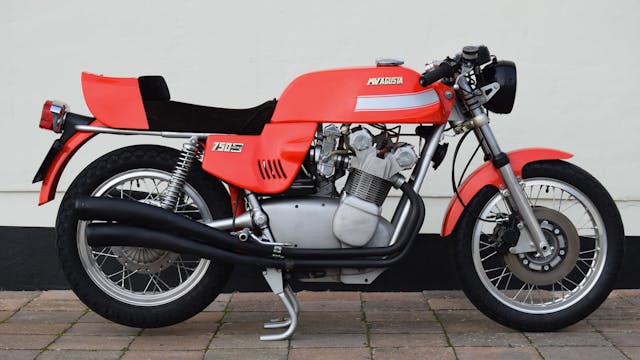
Average #2-condition (Excellent) value: $81,000
The MV Agusta 750 S is one of the most stunning motorcycles of the early ’70s, and perfect examples demand over $100K. The 750 S was superseded by the 750 S America from 1975– 1980 (arriving in a few different forms); the America lost the classic styling but maintained the hand-built exotic flavor and evolved to focus more on a grand-prix-type experience.
When new they cost three times more than the Japanese CB750 and Z1 superbikes of the time, but today exclusive Italian bikes such as the Ducati 750SS round case are faltering off of their highs. Still, some 32 percent more 750 S Americas were added to collections in 2020 compared to 2019, so it remains to be seen if late ’70s Italian superbikes from niche manufacturers can ride the wave of Japanese value gains. If not, they’ll likely remain in a steady corner of the market.
Iconic British classics
British motorcycles have an unparalleled aura of tradition, visceral sensations, and style. The enduring design of bikes like the Bonneville, for example, are proof positive that their appeal transcends generations. But are buyers always going to be willing to pay a premium for the early greats?
1948–55 Vincent Black Shadow

Average #2-condition (Excellent) value: $94,500
The Vincent Black Shadow is one of the most well-known models outside of the motorcycle world. When car folks step into the motorcycle market they tend to bring a lot of money with them, and many collectors have (or had) a Vincent on their shortlist as a kind of cherry on top. The Black Shadow isn’t all hype, either. It’s considered one of the world’s first superbikes, and it maintained a production top-speed record all the way until the 1973 Kawasaki Z1.
Values have been sliding from their peak in 2016, and the number of Vincents in large collections grew 8 percent in the last year—10 percentage points behind the year before and lagging overall motorcycle growth in large collections by 7 percent. As values drop, this could go one of two way for Black Shadows: buyers may jump in again as they start to look like good deals, or the perception could be that the ship has sailed.
1959–1962 Triumph pre-unit Bonneville

Average #2-condition (Excellent) value: $15,500
The Triumph Bonneville represents an entire era of British bikes, but also a certain bad-boy, king-of-cool Steve McQueen lifestyle. For many baby boomers this is the bike that pulls at heartstrings today. The Bonneville that first came out in 1959 and ran to 1962 is known as a pre-unit Bonneville, because the crankcase, primary case, and gearbox were all separate items bolted together externally. In 1963 the bike was improved with “unit” construction that combined the crankcase, primary, and gearbox into one. This advancement reduced weight and set the style for all Bonneville engines to come.
The Bonneville’s appeal transcends generations, and the modern remake that came out in 2001 has helped revive the Triumph brand at large. The early pre-unit bikes are rarer and more valuable than the later ones, and values have plateaued recently near $20K. Watch the trajectory of the early, most desirable pre-unit Bonnevilles to best predict the future of this storied motorcycle.
Harley vs. Indian
Our data suggests that younger collectors are willing to pay for old Harleys, but that doesn’t necessarily mean values will climb indefinitely. Indian motorcycles, too, have long kept pace with similar Harleys in the marketplace. As time goes on, will Indians and Harleys remain in lockstep, or will their values diverge? The early bikes, pre-1950s, are at this point equally significant as historic relics (think office art) as they are relevant riders, and changing demand as this dynamic shakes out could result in considerable price fluctuations.
1936–47 Harley-Davidson EL/FL Knucklehead

Average #2-condition (Excellent) value: $70,800
The Harley-Davidson Knucklehead helped shape a signature style for Harley that endures today; the iconic large fenders and wide tires can be found throughout Harley’s lineup. The Knucklehead, known by that name because of the way the head makes a fist shape, continues to command respect. Those worried about their old Harleys being unwanted by the younger collectors will be pleased to learn that our data indicates millennials are willing to pay a premium for these American classics. 2020 welcomed a new record for a Knucklehead when the “Greenie” bike sold for $220K, and our valuation team is watching how results in 2021 thicken the plot. Will a Knuckle selling for $50K–$70K continue to entice, or is the ceiling within sight?
1940–1953 Indian Chief
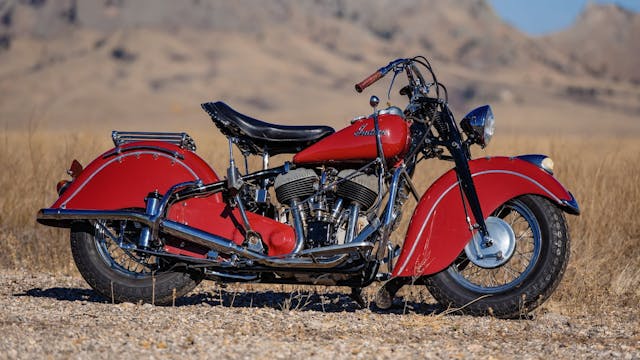
Average #2-condition (Excellent) value: $32,300
Starting in the early 1900s, Indian battled Harley on the race track and showroom in a war that raged for five decades before Harley ultimately prevailed. The Indian Chief, one of the most famous and longest-running models of its time, debuted in 1922 and left the market in 1953. But it’s the 1940–1953 models with their swooping skirt fenders and sprung rear ends that ring clear in the eyes of most true Indian fans. In 1950 the Chief gained telescopic forks (Harley gained these on the Panhead in 1949) and a larger 80-cu-in engine. By 1953 the doors to the factory were closed for good, until revitalization efforts by companies in the late ’90s culminated in a successful revival of the brand by Polaris in 2011.
Values for Harleys and Indians are closely linked for the moment, and tracking sales in 2021 of the elegant 1940+ Chief, Knuckleheads, Panheads should shed light on the evolving relationship that buyers’ have with these two brands. If Indian tips the scales, it would most certainly fan the flames of this age-old rivalry.
Like this article? Check out Hagerty Insider, our website devoted to tracking trends in the collector vehicle market.

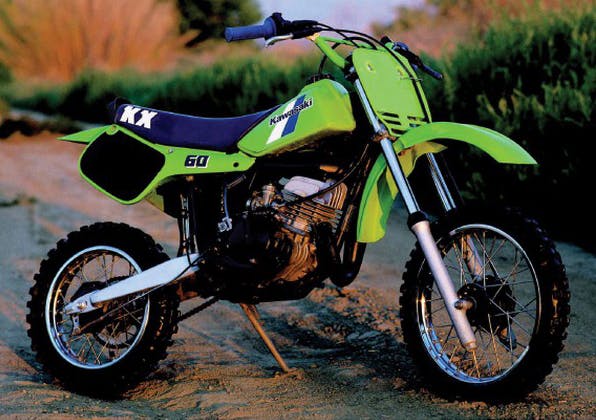

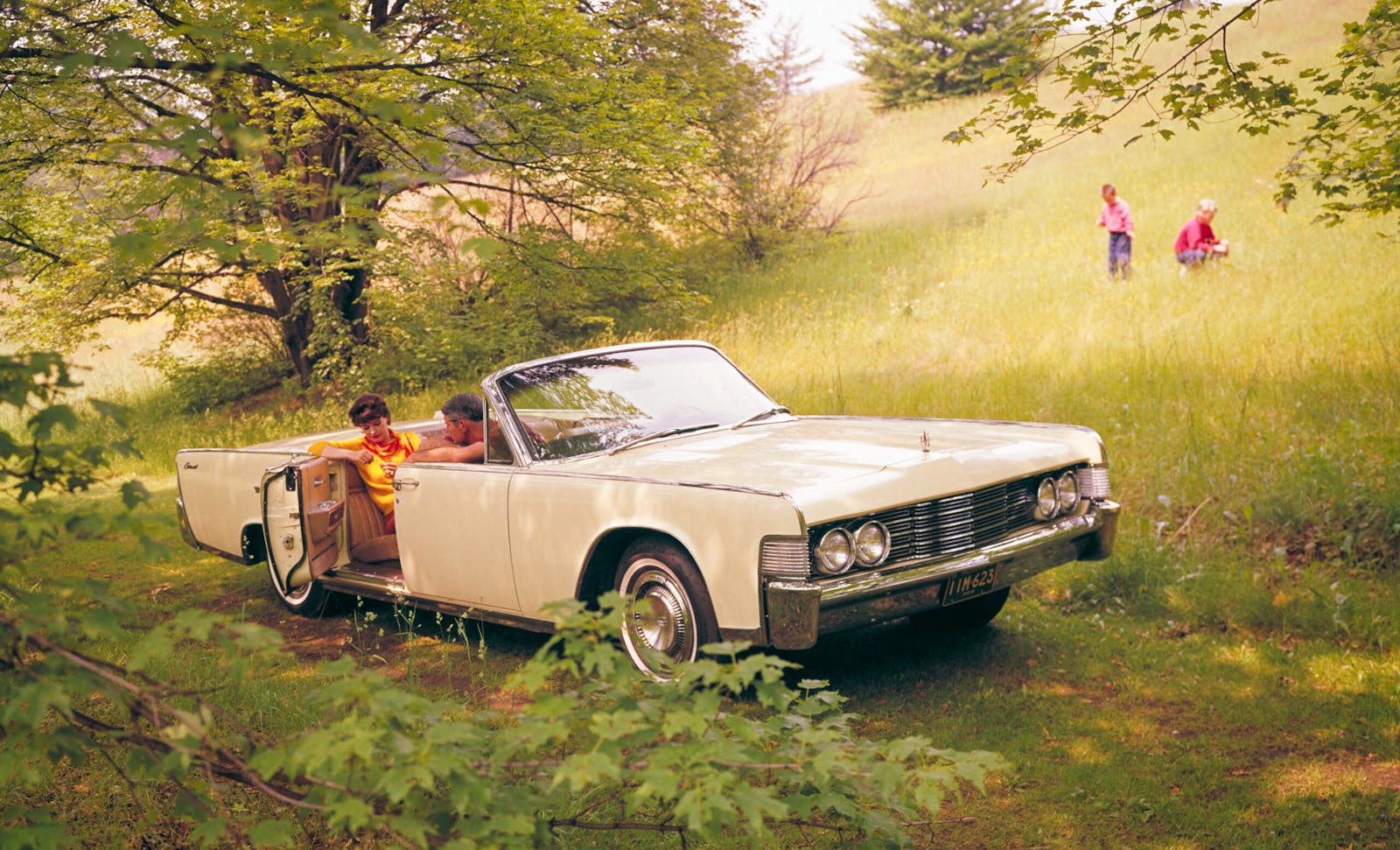

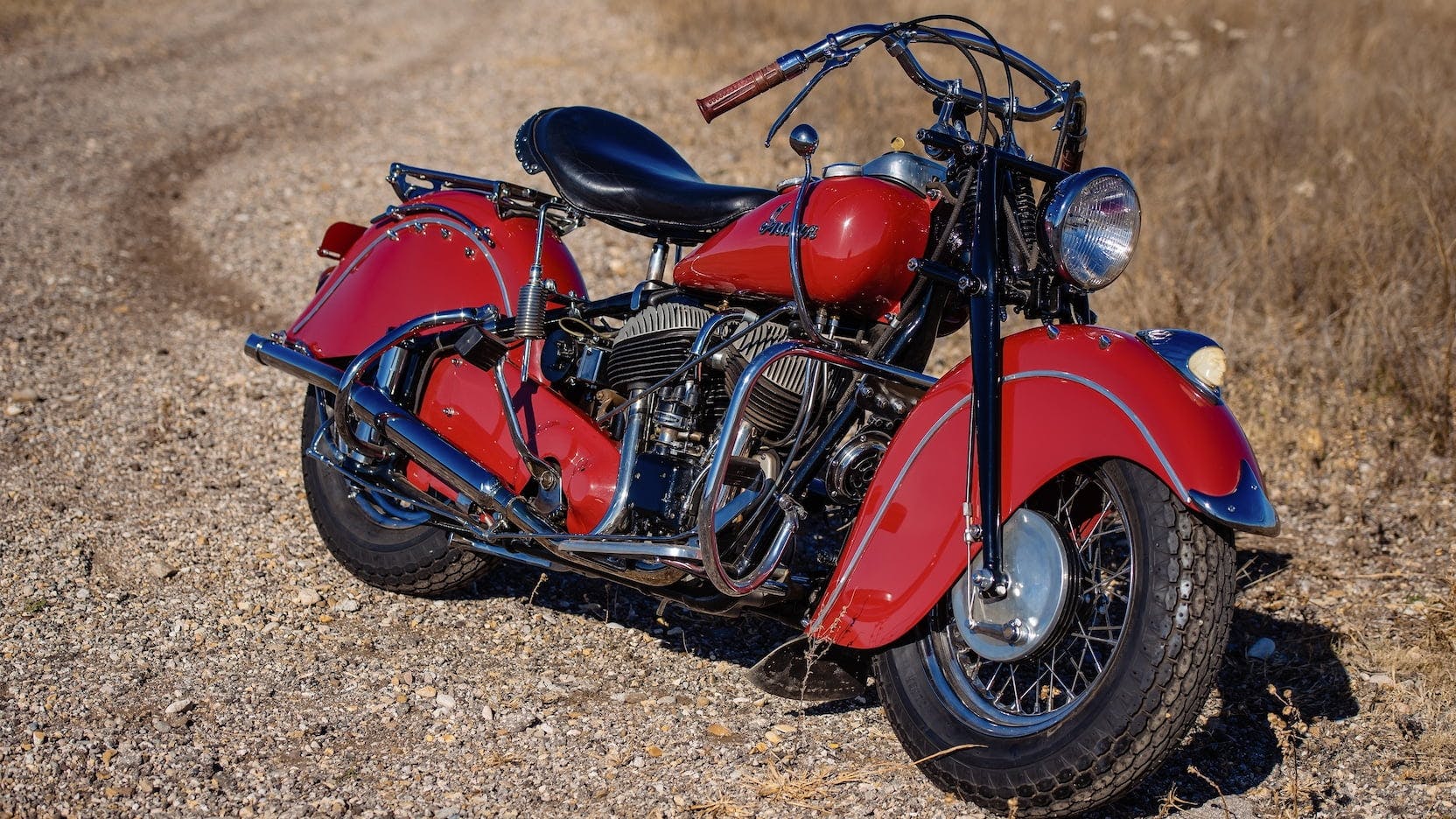
Do have all the plastics for a 1983 Honda XR500R